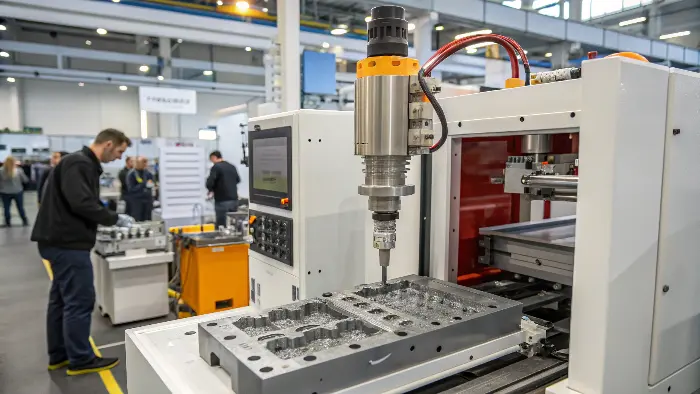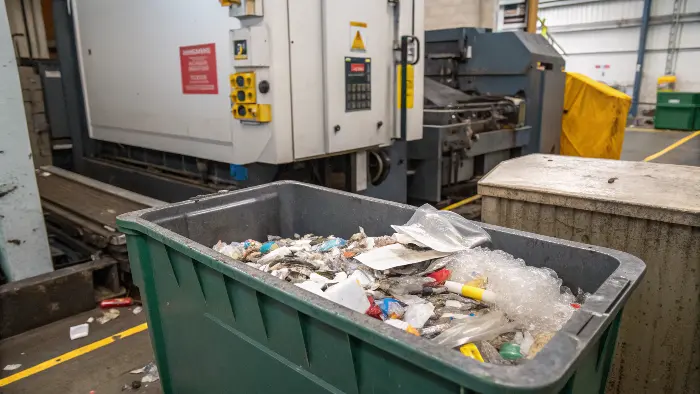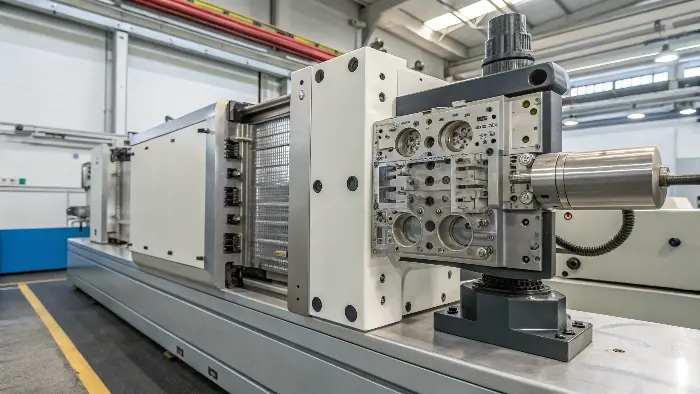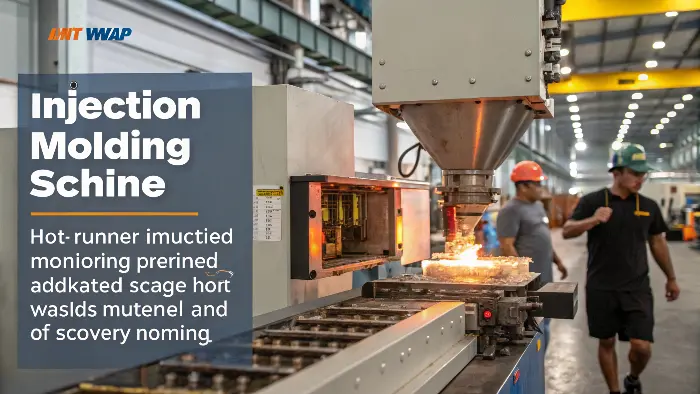As a project manager, you’re constantly balancing cost, quality, and speed. But now, there’s another critical factor: sustainability. Seeing piles of plastic runners and rejected parts is not only a hit to your budget but also a major environmental concern. You’re under pressure to reduce your company’s footprint, but finding practical ways to minimize waste in injection molding feels like a huge challenge.
Injection molds can be designed to minimize waste by implementing two key strategies. First, using a hot runner system keeps the plastic in a molten state within the mold, eliminating the solid runner scrap produced in every cycle. Second, for cold runner molds, optimizing the runner layout and gate design minimizes the volume of plastic needed to fill the part, directly reducing material waste.

These design choices are made long before the first part is ever produced, and they have a massive impact on the long-term efficiency and cost of your project. I’ve seen firsthand how a small upfront investment in a better mold design can save tens of thousands of dollars in wasted material over the life of a product. To really understand how to achieve this, we first need to identify exactly where the waste comes from.
What is the waste of injection molding?
You see the scrap bin filling up, but what’s actually in it? To many, waste is just an unavoidable byproduct of manufacturing. This mindset can lead to accepting high scrap rates as "the cost of doing business." This acceptance prevents you from identifying the root causes, which directly impacts your project’s profitability and environmental goals. Let’s break down what this waste really is.
Waste in injection molding primarily consists of the sprue and runner system, which is the channel of plastic that delivers molten material to the part cavity. Other forms of waste include rejected parts due to defects like flash, short shots, or warping, as well as the material purged from the machine during color or material changes. Each of these represents lost material, time, and energy.

Understanding the different types of waste is the first step toward eliminating them. It’s not just one thing; it’s a combination of factors, some of which are more controllable than others.
The Most Obvious Culprit: The Runner System
In a conventional "cold runner" mold, the sprue and runner are channels cut into the mold steel. Molten plastic flows through them to reach the part cavity. When the part cools and is ejected, this entire plastic channel is ejected with it. While the part is kept, the runner is scrap. For small parts, the runner can sometimes weigh more than the part itself! This is the most consistent and predictable source of waste in the process. While this scrap can sometimes be ground up and reused (regrind), it’s not always possible, especially with certain engineering-grade or colored plastics where material purity is critical.
The Hidden Costs: Defective Parts and Purging
Beyond the runner, you have other significant sources of waste that point to process inefficiencies.
| Type of Waste | Description | Common Cause |
|---|---|---|
| Rejected Parts | Parts that don’t meet quality specifications. | Defects like flash (excess plastic), short shots (incomplete parts), sink marks, or warping. Often caused by poor mold design or incorrect processing parameters. |
| Purge Material | Plastic pushed through the machine barrel between jobs. | Necessary to clean out the previous color or material type before starting a new production run. |
| Energy Waste | Inefficient use of electricity to run the machine. | Poorly designed cooling channels can extend cycle times, meaning the machine runs longer and uses more energy per part produced. |
At CavityMold, we see waste not just as a material problem, but as an information problem. Every rejected part is telling you something is wrong with the mold design or the process. Our job is to listen to that data and design a tool that minimizes these issues from the very start.
How are injection molds designed to reduce waste?
You know that mold design is a complex process, but how does it specifically relate to waste reduction? It’s easy to think that the mold’s only job is to create the part’s shape. This overlooks the fact that the mold is a complete manufacturing system. A design that ignores process efficiency will inevitably lead to higher scrap rates, longer cycle times, and more energy consumption.
Injection molds are designed to reduce waste by focusing on process efficiency from the start. This involves using mold flow analysis software to simulate how plastic fills the cavity, allowing designers to optimize the runner system for minimal material usage. It also includes designing highly efficient cooling channels to shorten cycle times and prevent defects like warping, which reduces the number of rejected parts.

When we design a mold at CavityMold, we’re not just designing a static block of steel. We are designing a dynamic system for efficient production. This proactive approach is fundamental to minimizing waste.
Simulation Before Fabrication
The most powerful tool in our arsenal is mold flow analysis. Before we cut a single piece of steel, we create a digital simulation of the entire injection process. This software shows us exactly how the molten plastic will behave inside the mold. We can see:
- Fill Pattern: Will all cavities fill at the same time? Are there areas that will be hard to fill?
- Pressure & Temperature: Where are the high-pressure spots? Is the plastic cooling too quickly?
- Potential Defects: The software can predict where weld lines, air traps, and sink marks are likely to occur.
By identifying these problems in a simulation, we can adjust the mold design—changing the gate location, resizing a runner, or adding a vent—before it becomes a costly physical mistake. This single step prevents the creation of thousands of defective parts down the line.
Designing for the Entire System
A waste-conscious mold design considers every element of the process. It’s a holistic approach that balances different priorities.
| Design Element | Waste Reduction Focus |
|---|---|
| Feed System | Designing runners that are as short and as small in diameter as possible, while still allowing the part to fill completely. This directly reduces the amount of scrap runner material per shot. |
| Cooling System | Placing cooling channels strategically to cool the part uniformly and quickly. This not only reduces the cycle time (saving energy) but also prevents warping, a major cause of rejected parts. |
| Ejection System | Ensuring the part can be removed cleanly without damage. A poorly designed ejection system can cause stress marks or breakage, turning good parts into scrap. |
I worked on a project for a client who needed a high volume of small electronic connectors. The initial design had a standard runner that was three times the weight of the parts. By spending extra time on mold flow analysis, we were able to design a highly balanced, "X" shaped runner that reduced the scrap volume by 40%. Over a production run of a million units, that translated into a massive material and cost saving.
How can you actively reduce waste in injection molding?
Knowing the theory is one thing, but what are the specific, actionable strategies you can implement? You need practical solutions that you can discuss with your manufacturing partner. It can be frustrating to know waste is a problem without having the vocabulary or technical knowledge to propose a solution. The good news is that there are proven mold design technologies aimed directly at this problem.
The most effective way to reduce waste in injection molding is by using a hot runner system, which eliminates runner scrap entirely. For projects using cold runners, you can reduce waste by designing a "balanced" runner layout that fills all cavities evenly, minimizing runner volume, and using gate types like submarine gates that automatically separate from the part, reducing secondary labor and potential damage.

These are not just minor tweaks; they are fundamental design choices that define the efficiency of your production. Let’s dive into the most impactful option: the hot runner.
The Gold Standard: Hot Runner Systems
A hot runner mold is a game-changer for waste reduction. Instead of a solid runner that gets ejected with the parts, a hot runner system uses a heated manifold and nozzles to keep the plastic in a molten state right up to the gate. The plastic in the runner system is never ejected; it’s simply used as part of the next shot.
| Feature | Cold Runner | Hot Runner |
|---|---|---|
| Runner Scrap | Yes, a full runner is ejected every cycle. | No, the runner remains molten in the mold. |
| Cycle Time | Longer, as the thick runner needs time to cool. | Shorter, as only the part needs to cool. |
| Material Cost | Higher due to wasted runner material. | Lower, as nearly 100% of material goes into the part. |
| Initial Mold Cost | Lower. | Higher, due to the complex heated system. |
| Gate Mark | Can be large and require manual trimming. | Often leaves a very small, clean "pin-point" gate. |
While the upfront cost of a hot runner mold is higher, the return on investment for high-volume projects is undeniable. You save on material, reduce cycle times (which means lower machine-hour costs), and eliminate the labor cost of separating parts from runners.
Optimizing the Cold Runner
If a hot runner isn’t a good fit for your project’s budget or volume, you can still dramatically reduce waste by optimizing the cold runner design. The goal is to make it as efficient as possible. This means creating a "geometrically balanced" runner, often in an ‘H’ or ‘X’ pattern, which ensures the distance from the sprue to each cavity is identical. This allows all parts to fill at the same rate and pressure, reducing the chance of defects and allowing you to minimize the overall runner size.
How is injection molding sustainable?
With so much focus on plastic waste, the term "sustainable injection molding" can sound like a contradiction. You might be asked by your leadership or customers about your environmental initiatives, and it’s hard to answer when you see the reality of production scrap. However, sustainability isn’t about being perfect; it’s about continuous improvement and making smarter choices.
Injection molding becomes more sustainable when it is highly efficient. By designing molds that eliminate runner waste (hot runners), reduce cycle times (efficient cooling), and prevent defective parts (mold flow analysis), the process consumes less material and less energy per part. Furthermore, the industry is increasingly using recycled materials and designing parts for easier end-of-life disassembly and recycling.

Sustainability in our industry is a practical goal achieved through smart engineering. It’s about doing more with less.
The Efficiency = Sustainability Equation
Every gram of plastic saved is a direct win for the environment. It means less raw material consumed and less waste to manage. Every second shaved off a cycle time means less electricity used by a massive injection molding machine. When we design a mold at CavityMold, these efficiencies are at the forefront of our thinking. A well-designed mold is inherently more sustainable than a poorly designed one. For example, a mold with conformal cooling channels that follow the part’s geometry can cut cooling time by 30-50%. Over a million-part run, that is a massive energy saving.
Closing the Loop with Materials and Design
The sustainability story also extends beyond the mold itself.
- Using Recycled Content: We are increasingly working with clients who specify recycled or "regrind" materials. Designing a mold to work effectively with these materials, which can have slightly different flow properties, is a key part of the sustainability puzzle.
- Designing for Disassembly: As product designers, you can contribute by creating products that are easy to take apart at the end of their life. This means avoiding permanently bonded plastics and using mechanical clips or standard screws. This makes it easier to separate different materials for recycling.
Sustainability isn’t a separate activity; it’s the outcome of a commitment to quality and efficiency. By focusing on designing the best possible mold, we are also designing the most sustainable process.
Conclusion
Designing injection molds to minimize waste isn’t just an environmental goal; it’s a core business strategy that boosts profitability and efficiency. By leveraging technologies like hot runner systems, optimizing cold runner designs through mold flow analysis, and focusing on defect prevention, you can significantly reduce material consumption, energy usage, and scrap rates, directly benefiting your bottom line.
